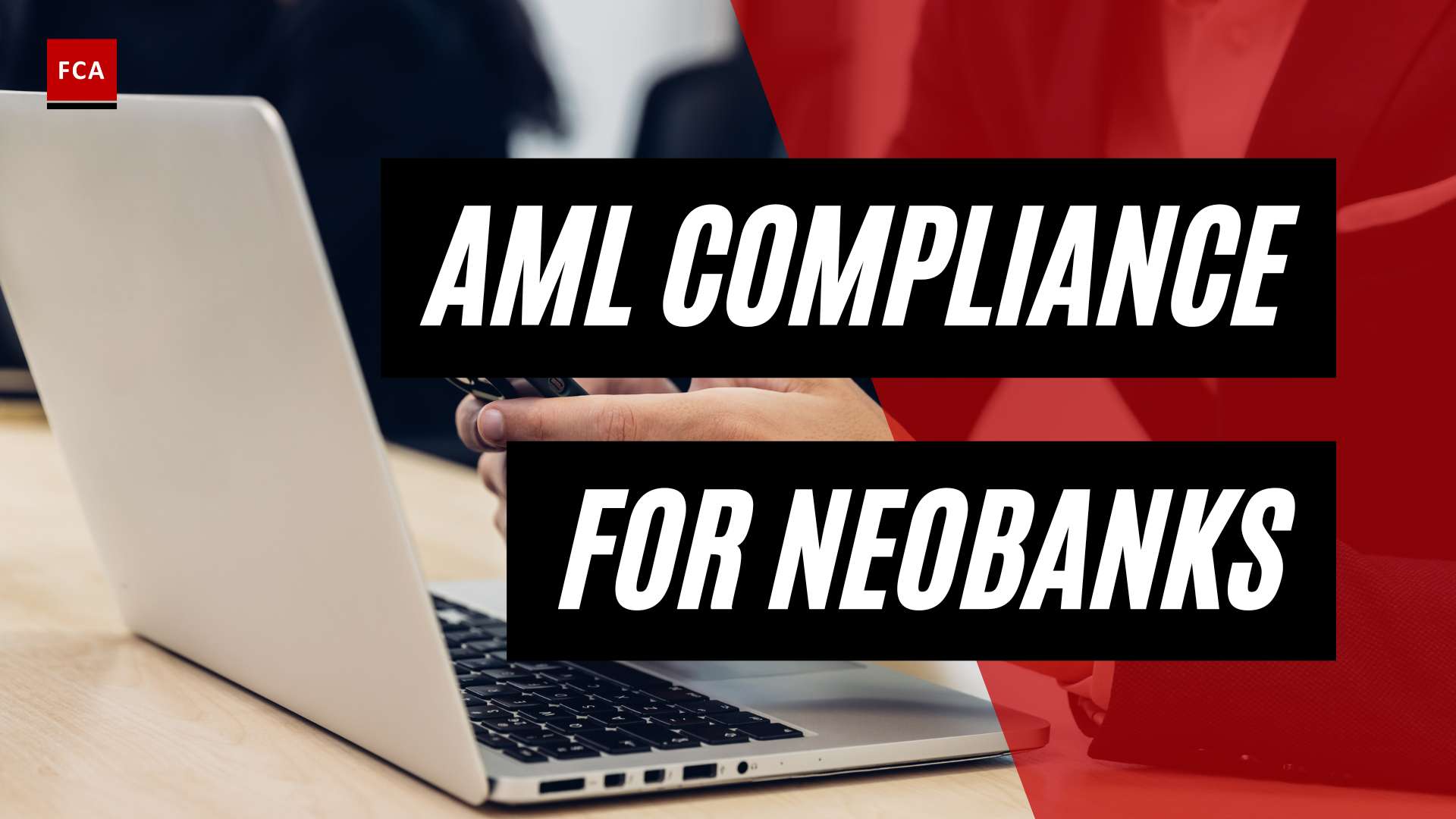Understanding FATF Recommendations
To effectively combat money laundering and terrorist financing on a global scale, it is essential to have a comprehensive framework in place. The Financial Action Task Force (FATF), established in 1989 at the G7 Summit in Paris, plays a significant role in shaping this framework. This section will provide an overview of FATF, the evolution of its recommendations, and the role these recommendations play in promoting anti-money laundering (AML) and counter-terrorism financing (CFT) efforts.
Overview of FATF
The FATF is an intergovernmental organization that sets international standards and promotes the implementation of legal, regulatory, and operational measures to combat money laundering, terrorist financing, and other related threats to the integrity of the international financial system. Its mission is to protect the global financial system and contribute to the safety and security of society as a whole.
FATF operates through a membership of over 200 countries and jurisdictions, including major financial centers, and collaborates closely with other international organizations and bodies involved in the fight against financial crime. The organization conducts mutual evaluations of its members to assess their compliance with the FATF recommendations and provide guidance on necessary improvements.
Evolution of FATF Recommendations
The FATF Recommendations have evolved over time to address emerging threats and challenges. Initially, the “40 Recommendations” were introduced in 1990, providing a comprehensive plan of action for countries to combat money laundering. These recommendations cover areas such as legal measures, financial system regulations, and international cooperation.
In response to the tragic events of September 11, 2001, FATF expanded its focus to include measures against terrorist financing. This led to the addition of the “Eight Special Recommendations on Terrorist Financing” to its standards. These recommendations further strengthened the international framework for combating the financing of terrorism.
Role of FATF Recommendations
The FATF Recommendations serve as an internationally recognized standard for AML and CFT measures. They provide countries with a blueprint for developing and implementing effective AML/CFT systems tailored to their specific circumstances. The recommendations are regularly updated to address emerging threats, technological advancements, and evolving trends in money laundering and terrorist financing.
Countries that are members of FATF are subject to mutual evaluations, which assess their compliance with the FATF recommendations. The peer-review system helps identify areas where improvements are needed and encourages countries to enhance their AML/CFT efforts. Non-compliance with the recommendations can have economic repercussions, including potential blacklisting.
By adhering to the FATF Recommendations, countries can strengthen their AML/CFT regime, promote international cooperation, and contribute to the global fight against financial crime. For more information on specific FATF recommendations and their implications, refer to our articles on FATF recommendations for AML compliance and FATF recommendations for risk assessment.
The FATF Recommendations provide a crucial framework for regulating and supervising financial institutions, including cryptocurrency exchanges. These recommendations ensure that proper anti-money laundering measures are in place, helping to safeguard the integrity of the financial system and prevent illicit activities.
FATF Recommendations for Cryptocurrency Exchanges
As part of its efforts to combat money laundering and the financing of terrorism, the Financial Action Task Force (FATF) has provided guidance on how virtual asset service providers (VASPs), including cryptocurrency exchanges, should adhere to anti-money laundering and countering the financing of terrorism (AML/CFT) regulations. It is essential for cryptocurrency exchanges to understand and implement the FATF recommendations to ensure compliance and maintain the integrity of the financial system.
FATF Guidance on Virtual Currencies
The FATF has issued comprehensive guidance for virtual currencies, outlining the obligations and responsibilities of cryptocurrency exchanges. The guidance is in alignment with the FATF Recommendations 15 and 16, which aim to prevent the misuse of virtual assets for illicit activities. Cryptocurrency exchanges are considered VASPs and must adhere to the AML/CFT regulations applicable to traditional financial institutions.
To comply with FATF’s standards, cryptocurrency exchanges are required to conduct risk assessments, implement AML/CFT policies and procedures, establish customer due diligence (CDD) processes, and report suspicious activities. They should also maintain appropriate records of transactions and customer identification data. By following these guidelines, exchanges can contribute to the global efforts in combating money laundering and terrorist financing.
Obligations for Virtual Asset Service Providers (VASPs)
Cryptocurrency exchanges, as VASPs, have specific obligations to fulfill under the FATF recommendations. These include:
- Conducting thorough customer due diligence (CDD) processes to verify the identity of their customers and assess the potential risks associated with their transactions.
- Establishing robust and effective AML/CFT policies and procedures tailored to the nature of their business and the risks they face.
- Implementing transaction monitoring systems to detect and report suspicious activities in a timely manner.
- Maintaining accurate records of transactions, including customer identification data, to support investigations and law enforcement efforts.
By fulfilling these obligations, cryptocurrency exchanges can play a vital role in preventing the misuse of virtual assets and ensuring the integrity of the financial system.
Risk Assessment and AML/CFT Policies
To effectively mitigate the risks associated with virtual assets, cryptocurrency exchanges must conduct comprehensive risk assessments. This involves understanding the specific risks and vulnerabilities posed by virtual currencies and tailoring risk mitigation measures accordingly. By identifying and assessing potential risks, exchanges can implement appropriate AML/CFT policies and procedures to safeguard against money laundering and terrorist financing activities.
Cryptocurrency exchanges should also adopt a risk-based approach (RBA) to customer due diligence and transaction monitoring. This means applying enhanced measures to higher-risk customers and transactions, while maintaining a proportionate approach for low-risk ones. By implementing an RBA, exchanges can allocate resources more effectively and focus their efforts on areas that pose higher risks.
By following the FATF recommendations and implementing robust risk assessment procedures and AML/CFT policies, cryptocurrency exchanges can contribute to the overall integrity of the virtual asset ecosystem and help maintain the trust of their customers and regulatory authorities.
In the next section, we will explore the compliance requirements that cryptocurrency exchanges need to adhere to, including customer due diligence (CDD) processes, suspicious activity reporting, and record-keeping and transaction monitoring.
Compliance Requirements for Cryptocurrency Exchanges
Cryptocurrency exchanges play a crucial role in the global financial system, and it is essential that they adhere to robust anti-money laundering (AML) and counter-terrorist financing (CFT) measures. In line with FATF recommendations, cryptocurrency exchanges are required to implement various compliance requirements to mitigate the risks associated with illicit activities. This section will explore the key compliance requirements for cryptocurrency exchanges, including customer due diligence (CDD) processes, suspicious activity reporting, and record-keeping and transaction monitoring.
Customer Due Diligence (CDD) Processes
To ensure effective AML/CFT compliance, cryptocurrency exchanges must establish comprehensive customer due diligence (CDD) processes. These processes aim to identify and verify the identities of their customers, assess the risks associated with their activities, and monitor their transactions. By implementing robust CDD measures, exchanges can enhance their ability to detect and prevent illicit activities, such as money laundering and terrorist financing.
The CDD processes for cryptocurrency exchanges include:
- Customer Identification: Exchanges must collect and verify customer identification information, such as name, address, and date of birth. This helps to establish the true identity of customers and ensure compliance with regulatory requirements.
- Risk Assessment: Exchanges should conduct risk assessments to determine the level of risk associated with each customer and transaction. This enables exchanges to allocate resources effectively and implement appropriate risk-based controls.
- Enhanced Due Diligence (EDD): For customers presenting higher risks, such as politically exposed persons (PEPs) or high-net-worth individuals, exchanges are required to conduct enhanced due diligence. This involves gathering additional information and scrutinizing transactions more closely.
- Ongoing Monitoring: Cryptocurrency exchanges must continuously monitor customer activities and transactions to detect suspicious patterns or behaviors. Regular monitoring allows exchanges to identify and report any potential AML/CFT risks promptly.
Suspicious Activity Reporting
Cryptocurrency exchanges have a critical role in detecting and reporting suspicious activities to the relevant authorities. They are required to establish mechanisms for identifying and reporting suspicious transactions that may be indicative of money laundering, terrorist financing, or other illicit activities. By promptly reporting such activities, exchanges contribute to the broader efforts in combating financial crimes.
Cryptocurrency exchanges should have internal procedures in place to ensure that staff members are trained to recognize and report suspicious activities effectively. These procedures should include clear guidelines on the types of activities that should be considered suspicious and the process for submitting suspicious activity reports (SARs) to the appropriate authorities.
Record-Keeping and Transaction Monitoring
To support AML/CFT efforts, cryptocurrency exchanges must maintain accurate and up-to-date records of customer information and transaction data. By keeping detailed records, exchanges can provide transparency and traceability, making it easier to identify any suspicious or illicit activities.
The record-keeping requirements for cryptocurrency exchanges typically include:
- Customer Information: Exchanges must retain customer identification information, transaction records, and supporting documents for a specified period of time. This information is crucial for investigations and audits.
- Transaction Data: Exchanges should maintain records of all transactions, including the originator and beneficiary details, transaction amounts, and any accompanying messages. This data assists in monitoring and identifying potential risks.
- Data Accessibility: Cryptocurrency exchanges must ensure that the records are readily accessible and can be provided to competent authorities upon request. This enables regulators and law enforcement agencies to carry out their duties effectively.
By adhering to these compliance requirements, cryptocurrency exchanges can contribute to the overall integrity of the financial system and mitigate the risks associated with money laundering and terrorist financing. It is essential for exchanges to implement robust systems and processes to ensure compliance with AML/CFT regulations and to actively cooperate with relevant authorities in the fight against financial crimes.
Implementing a Risk-Based Approach
To effectively address the risks associated with cryptocurrencies, cryptocurrency exchanges are expected to implement a risk-based approach (RBA) as part of their AML compliance framework. This approach requires understanding the risks involved in the cryptocurrency space, monitoring and analyzing transactions, and conducting ongoing supervision of customer activities.
Understanding Risks in the Cryptocurrency Space
Cryptocurrencies present unique risks due to their decentralized nature and the potential for anonymity in transactions. Understanding these risks is vital for cryptocurrency exchanges to develop appropriate risk mitigation strategies. Risks in the cryptocurrency space may include money laundering, terrorist financing, fraud, and other illicit activities.
By identifying and assessing these risks, exchanges can tailor their AML/CFT policies and procedures to effectively mitigate them. It is essential for exchanges to stay updated on emerging risks and regulatory developments to ensure ongoing compliance with FATF recommendations.
Monitoring and Analyzing Transactions
One of the key components of implementing a risk-based approach is the monitoring and analysis of transactions. Cryptocurrency exchanges should establish robust systems and procedures to monitor transactions for suspicious activities. This includes the identification of patterns or indicators that may suggest illicit activities, such as structuring transactions to avoid detection or engaging in high-volume transactions without a clear business purpose.
Monitoring transactions allows exchanges to detect and report suspicious activities promptly. It also enables them to fulfill their obligations in identifying and verifying customers, as well as conducting due diligence on higher-risk customers. By leveraging advanced technologies and data analytics, exchanges can enhance their transaction monitoring capabilities and improve the effectiveness of their AML/CFT efforts.
Ongoing Supervision of Customer Activities
Continuous supervision of customer activities is crucial for cryptocurrency exchanges to detect and prevent money laundering and terrorist financing activities. Exchanges should establish measures to monitor customer behavior and transactions on an ongoing basis. This can involve reviewing transaction patterns, assessing the source of funds, and identifying any unusual or suspicious activities.
By implementing robust internal controls, conducting regular audits, and providing training to staff members, exchanges can ensure effective supervision of customer activities. Ongoing supervision helps identify red flags and ensures compliance with AML/CFT regulations.
To stay updated on the evolving landscape of AML compliance in cryptocurrency exchanges, it is essential for exchanges to closely monitor the updates and monitoring efforts by FATF and other regulatory bodies. This enables exchanges to adapt their risk-based approach and enhance their AML/CFT frameworks accordingly.
Implementing a risk-based approach allows cryptocurrency exchanges to effectively manage the risks associated with virtual assets, enhance their AML/CFT efforts, and contribute to a safer and more secure cryptocurrency ecosystem. By understanding risks, monitoring transactions, and conducting ongoing supervision of customer activities, exchanges can demonstrate compliance with FATF recommendations and contribute to the prevention of money laundering and terrorist financing.
Ensuring Effective AML/CFT Compliance
To effectively comply with anti-money laundering (AML) and combating the financing of terrorism (CFT) regulations, cryptocurrency exchanges must implement robust measures within their operations. This section explores key components for ensuring effective AML/CFT compliance, including internal controls and audits, training and staff awareness, and the importance of continued supervision.
Internal Controls and Audits
Maintaining strong internal controls is imperative for cryptocurrency exchanges to mitigate the risk of money laundering and terrorist financing. By establishing comprehensive policies and procedures, exchanges can create a framework that promotes compliance with AML/CFT regulations.
Internal controls should encompass various aspects of the exchange’s operations, including customer due diligence, transaction monitoring, and suspicious activity reporting. These controls help identify and address potential risks associated with illicit activities. Regular internal audits are essential to assess the efficiency and effectiveness of these controls, ensuring they remain up to date and aligned with evolving regulatory requirements.
Training and Staff Awareness
A well-trained and informed staff is crucial for effective AML/CFT compliance within cryptocurrency exchanges. Training programs should be designed to educate employees on the latest AML/CFT regulations, emerging risks, and the exchange’s internal policies and procedures.
Staff members should be equipped with the knowledge and skills necessary to identify and report suspicious activities. Training programs should cover topics such as customer due diligence, transaction monitoring, and the importance of adhering to AML/CFT requirements. Regular training sessions and workshops can help ensure that employees are aware of their responsibilities and understand how their actions contribute to the overall compliance efforts.
Importance of Continued Supervision
Continued supervision is vital for maintaining AML/CFT compliance within cryptocurrency exchanges. Ongoing monitoring of customer activities, transactions, and adherence to established policies and procedures is essential to detect and prevent any potential money laundering or terrorist financing activities.
Supervision should include periodic reviews of customer accounts, transaction histories, and risk assessments. By proactively monitoring for suspicious patterns and activities, exchanges can promptly identify and report any potential illicit behavior. Regular assessments and reviews enable exchanges to adapt their AML/CFT measures to address emerging risks and changing regulatory requirements.
By prioritizing internal controls, providing comprehensive training, and implementing robust supervision mechanisms, cryptocurrency exchanges can ensure effective compliance with AML/CFT regulations. This commitment to compliance helps create a secure and transparent environment that mitigates the risk of illicit activities and safeguards the integrity of the cryptocurrency ecosystem.
Challenges and Future of AML Compliance in Cryptocurrency Exchanges
As the world of cryptocurrencies continues to evolve, ensuring effective anti-money laundering (AML) compliance in cryptocurrency exchanges poses significant challenges. These challenges stem from the decentralized nature of cryptocurrencies, the difficulty in tracking transactions and individuals, and the need for ongoing updates and monitoring by the Financial Action Task Force (FATF).
Decentralized Nature of Cryptocurrencies
One of the major challenges in AML compliance for cryptocurrency exchanges is the decentralized nature of cryptocurrencies. Unlike traditional financial systems that are centralized and regulated, cryptocurrencies operate on decentralized networks, making it more difficult to enforce AML measures. The lack of a central authority overseeing transactions and identities presents challenges in identifying and tracking illicit activities. As a result, regulators face hurdles in effectively enforcing AML laws in the cryptocurrency sector (Reuters).
Tracking Transactions and Individuals
Another challenge in AML compliance for cryptocurrency exchanges is the ability to track transactions and individuals. While transactions on the blockchain are recorded, they are pseudonymous, meaning they are not directly linked to real-world identities. This anonymity makes it challenging to trace the flow of funds and identify the parties involved in a transaction. Cryptocurrency exchanges must employ sophisticated tools and techniques to analyze transaction patterns and identify suspicious activities that may indicate money laundering or terrorist financing. Implementing robust transaction monitoring systems and adhering to strict know-your-customer (KYC) procedures are vital in combating these challenges.
Future Updates and Monitoring by FATF
The FATF plays a crucial role in setting international standards and guidelines for AML/CFT measures. As the cryptocurrency landscape continues to evolve, the FATF is expected to monitor and update its recommendations to address the emerging risks associated with cryptocurrencies and the potential for illicit activities. This ongoing commitment to updating guidelines ensures that regulators and cryptocurrency exchanges stay abreast of the latest developments and implement effective AML/CFT measures (Reuters).
By regularly updating its recommendations, the FATF aims to enhance the integrity of the global financial system and protect it from money laundering and terrorist financing risks. It provides countries with guidance on how to implement effective AML/CFT regulations in the cryptocurrency space. Cryptocurrency exchanges must stay vigilant and adapt to these evolving guidelines to ensure compliance with the latest AML/CFT standards.
In conclusion, AML compliance in cryptocurrency exchanges faces unique challenges due to the decentralized nature of cryptocurrencies, the difficulty in tracking transactions and individuals, and the need for ongoing updates and monitoring by the FATF. Overcoming these challenges requires a collaborative effort between regulators, cryptocurrency exchanges, and other stakeholders to implement robust AML/CFT measures and stay abreast of the evolving landscape of cryptocurrencies.








